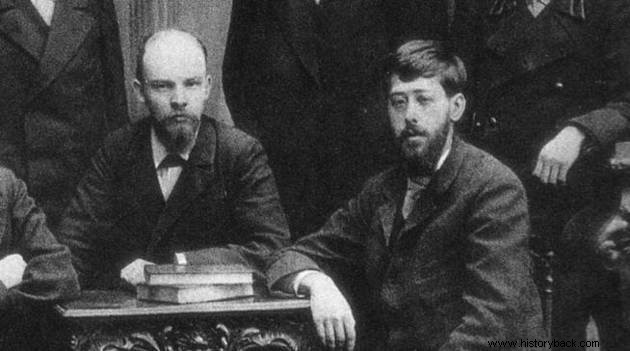Bolsheviks and Mensheviks these are the two currents into which the Russian Social Democratic Labor Party has split.
The words “Bolshevik” and “Menshevik” come from Russian and mean, respectively, majority and minority.
Division between Bolsheviks and Mensheviks
The rupture of the Russian Social Democratic Labor Party took place when the organization was holding its second congress in 1903.
At that meeting, two groups formed:the Bolsheviks, led by Lenin, and another, the Mensheviks, led by Yuli Martov (aka Julius Martov).

During the deliberations, there was an intense debate about the possibilities of how and when to install a socialist regime in Russia.
Lenin's theses were victorious during the Central Committee's vote, that is, they were the majority and that's why they received the name "Bolshevik". After this fact, the party would be fractured until 1912, when the Mensheviks (minority, in Russian) chose to found their own party.
Despite differences, the Mensheviks played a key role during the Russian Revolution in 1917.
Differences between Bolsheviks and Mensheviks
According to Lenin, the party should be made up of professional revolutionaries who would be in charge of leading the masses to the socialist regime.
He also defended the thesis that the ally of the working class should be the peasants, as they were also oppressed by both the tsarist regime and the bourgeoisie. Finally, when the workers took power, the dictatorship of the proletariat would be installed.
Yuli Martov argued that the party should be open to anyone who wanted to join and support the revolutionary cause.
To make the revolution, Martov said, the working class would need to ally itself with the liberal bourgeoisie and, in this way, fully develop capitalism in Russia. First, they should make a bourgeois revolution and only after that, start building a socialist society, without going through the dictatorship of the proletariat.
See also:Russian Revolution (1917)Socialism and the Russian Revolution (1917)
The repression exercised by the tsarist political police and the harsh living conditions of the Russian working class make many intellectuals admire the socialist ideals of Karl Marx.
Throughout the 19th century, throughout Russia, several workers' organizations inspired by Marxist ideas were founded. In order to unify them, in 1898, the Social-Democratic Workers' Party of Russia was founded, whose presidents would be Lenin and Yuli Martov.
Both were guarded by the police and sent to Siberia for their political activities, until they were exiled to London.
Lenin's ideas emerged victorious and became the "majority" in the organization. For their part, Yuli Martov's theses became the “minority” within the party.
Bolshevik and Menshevik leaders
Lenin, along with Leon Trotsky, was one of the most outstanding leaders of the Bolsheviks and the Russian Revolution. Later, this nucleus would give rise to the Communist Party of the Soviet Union - CPSU.
For his part, the leader of the Mensheviks, Julius Martov, was removed from Russian political life after 1917 and forced into exile in Germany, where he would die in 1921.
We have more texts on the subject :
- Bloody Sunday
- Questions about the Russian Revolution
